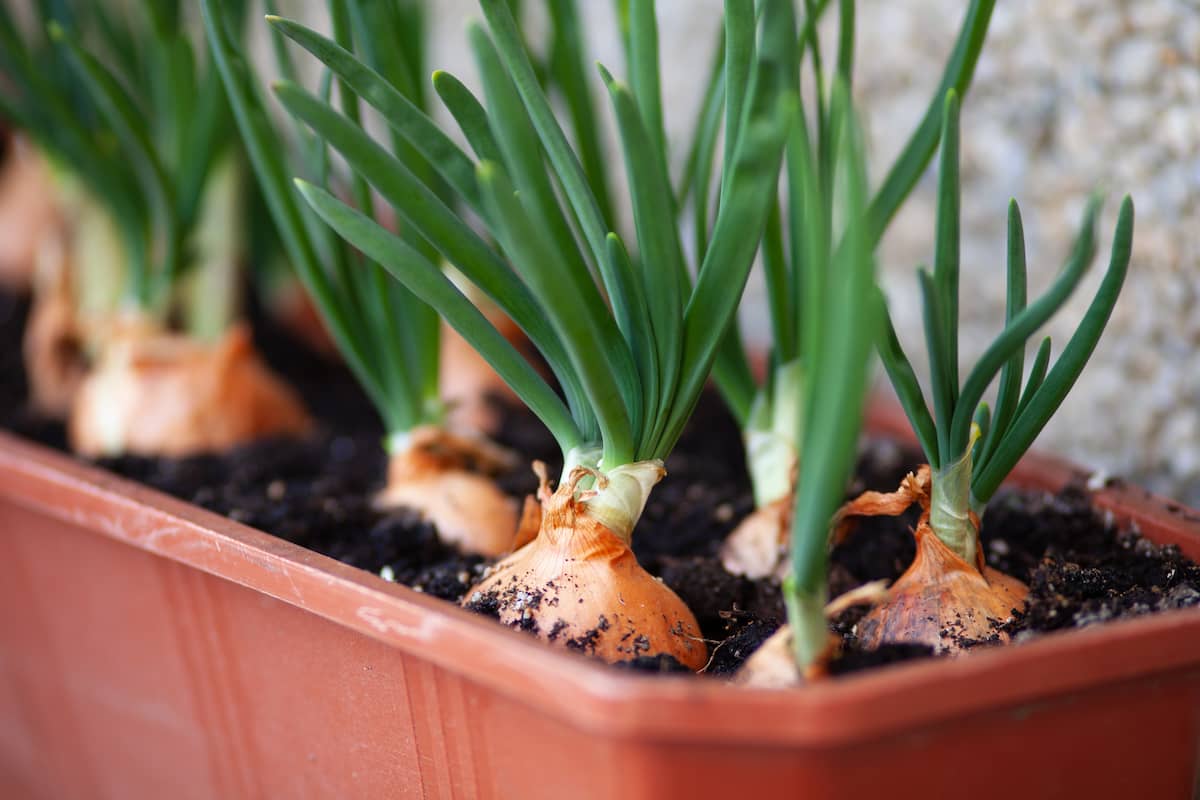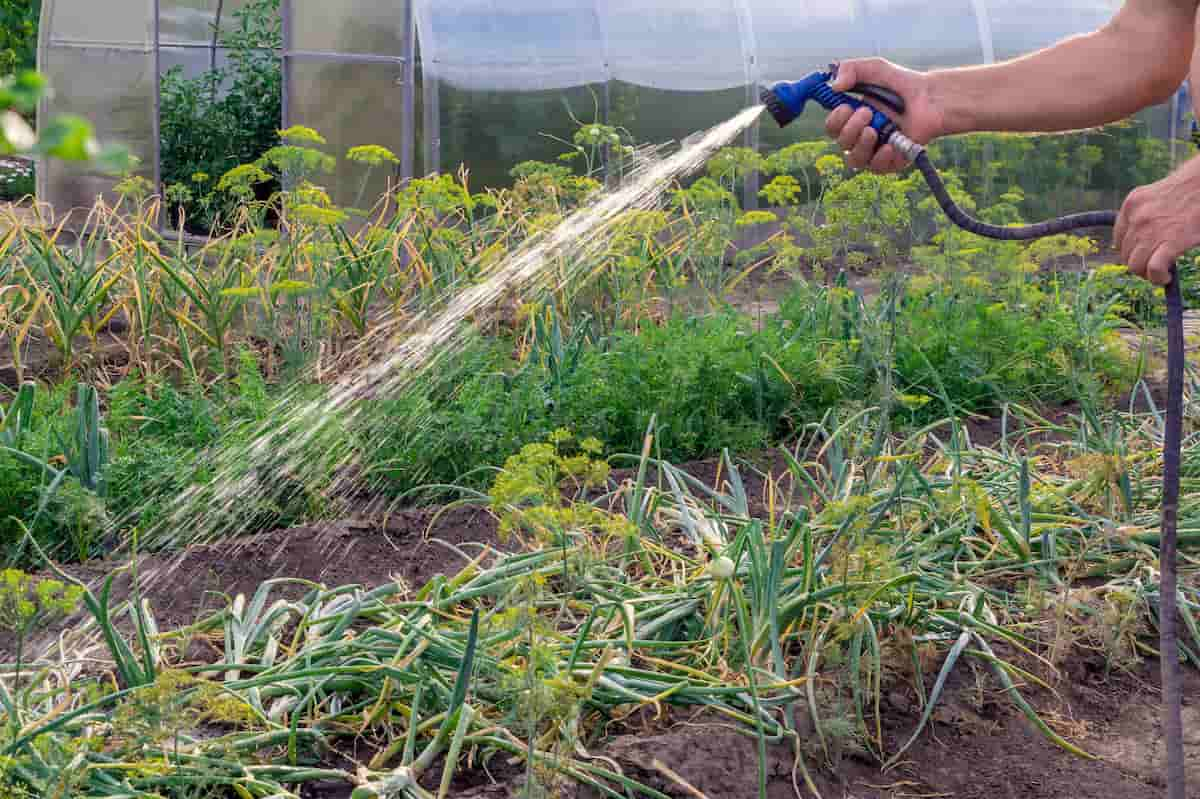One of the most popular home ingredients, achieving high-quality onions in your greenhouse is a great idea for many households. Onions are relatively easy to grow, making them an ideal first venture for amateur gardeners. Due to their hardiness, onions are the perfect spring plant, meaning that, come summer, you can access delicious onions in the comfort of your home.

How to Grow Onions in Greenhouse
Soil Requirements for Growing Onions in Greenhouse
Onions should be grown on friable soils, which contain high amounts of organic matter and have good water infiltration rates and good moisture-holding capacity. The soil should not be compacted, and the pH should be 5.8 to 6.6. Sandy loams and muck soils are often used for onion production. Soils with low sulfur levels (below 40 ppm) are recommended for sweet Spanish onion production.
Temperature Requirements in the Greenhouse for Growing Onions
Onions are winter plants and prefer temperatures range of 12.7°C and 23.8°C. The greenhouse temperature should be adjusted around these temperatures, especially throughout onion bulb formation. Greenhouse planters should use heaters or evaporator coolers inside the greenhouse to attain the abovementioned temperature. Onion germination will take roughly place 6 to 12 days. In the process, adjust the greenhouse temperature during the day from 15.5°C to 18.3°C.
Onion Varieties Suitable for Growing in Greenhouse
Long-day Varieties
- Yellow Sweet Spanish: large, round shape; yellow-white.
- First Edition: high-yielding, stores well, flavorful, creamy-yellow
- Red Wethersfield: flat bulbs that store well, white flesh, red-skinned
- Aisa Craig, Walla Walla: huge bulbs
- Buffalo, Norstar: produce early but keep only until late December
- Copra, Southport Red Globe, Sweet Sandwich, Yellow Globe: keep well
- Red Florence: Oblong shape
Short-day Varieties
- Stuttgarter: sold in sets, early maturity with a slightly flat shape, yellow
- White Bermuda: extremely mild, with thick, flat bulbs; white
- Red Burgundy: good table onion with mild, sweet white inside; short-term keeper
- Crystal Wax White Bermuda: a great onion for pickling when harvested at “pearl” size
- Hybrid Yellow Granex: sweet, Vidalia type
- Southern Belle: ruby-color throughout
- Texas 1015-Y Supersweet: stores well
Day-neutral or Intermediate Varieties
- Candy: golden, thick-flesh, jumbo bulbs; stores well
- Red Stockton: large, red-ringed, white-flesh bulbs
- Super Star: large, sweet, white bulbs
Planting the Onion Sets Inside Your Greenhouse
- In preparation for planting onions, prepare the soil and spread one to two inches of compost.
- Mix the compost into the top six to eight inches of soil with a rototiller. To smooth the surface of the soil, use a rake.
- Make a 4-inch wide and deep trench in the soil bed with a trowel.
- The bottom of the trench should be covered with 10-20-10 granular fertilizer at a rate of 1/2 cup per ten feet.
- Cover the fertilizer in the trench with soil 2 inches deep.
- Make sure the soil in the trench is firmly pressed down.
- The rounded ends of onion sets should face the ground, while the pointed ends should face upward.
In case you missed it: A Step-by-Step Guide for Growing Onion/Leek Microgreens: DIY in Simple Way from Seeds in Containers

- Place or push the onion set in the trench’s bottom center. Four inches should be the spacing between them.
- Water at a depth of 6 inches with a garden hose.
- The foliage of onion bulbs reaches a height of 3 inches when they start appearing.
- Apply 3/4 pound of 5-10-10 granular fertilizer per 25 linear feet of row at this stage.
- Similarly, dig a 1-inch trench down either side of the growing row of onions.
- Onion rows should be spaced 2 to 3 inches apart from the trenches.
- Divide the fertilizer into two equal portions after measuring out the correct amount.
- The first portion of fertilizer should be applied evenly along the bottom of the left trench, while the second portion should be applied along the bottom of the right trench.
- The trenches should be backfilled with soil.
- Activate the fertilizer by thoroughly watering the area.
- Planting mats should be used to cover onion beds. Mat holes should be 15 cm apart. The greenhouse onions bed is ideal for growing medium- to large-sized onions.
Fertilizing Requirements for Onions Growing in Greenhouse
In the first two to three weeks following planting, onions require phosphorus and potassium for root development. Apply 10–20–10 fertilizer near where onions will be planted just before planting. It takes three weeks for the root system to establish after planting.
Feeding the foliage biweekly with a nitrogen-heavy fertilizer, like 21–0–0, will keep the foliage growing and having a deep green color. It will take two to three weeks for a new leaf to emerge. After the transfer of carbohydrates, or bulbing, begins (where the bulb is forming, the soil cracks), the growing cycle is complete. The fertilizer does not need to be applied again.
Watering Requirements for Onions Growing in Greenhouse
The foliage must be kept healthy and disease-free as soon as it grows. The majority of foliage diseases are caused by leaf wetness. The best way to irrigate your garden is to use drip irrigation or soaker hoses instead of overhead watering, which attaches fungus and bacteria to the leaves. Onions thrive with consistent moisture but rot if overwatered.
Your irrigation system should apply water uniformly, approximately to a depth of 1 to 2 inches of water a week until bulbing and then about 4 inches per week during bulbing. Maintain moisture and control weeds with mulch, but remove it when bulbing begins to help cure the bulbs.
Preventing Disease in Onions Growing in Greenhouse
In a particularly rainy season, bacterial and fungal spores will likely appear during the growing cycle. The key is to prevent the spores from multiplying and spreading. The foliage of the onion should be sprayed with a protective fungicidal spray every two weeks throughout the growing season. You may want to consider organic fungicides, such as oxidate and copper, if you do not want to use synthetic fungicides. Without spraying, the disease will spread to the rings inside the onion and cause it to decay.
Harvesting and Curing Onions Grown in Greenhouse
Upon reaching maturity, the onion’s top will fall over due to its neck no longer supporting the foliage. The onions are now ready for harvesting and curing. Dry roots are the foundation of a properly cured onion. Put the bulbs out to dry in a location that receives breezes after you remove them from the soil.
To prevent sunburn, cover each onion bulb with the foliage of the following onion until it has a nice dry leaf on the outside. Next, cut the foliage top about 1 inch above the bulb and trim the roots once the neck is completely dry (as seen when you rub your thumbs together). During storage, this will prevent the bulb from decaying or sprouting.
In case you missed it: How to Grow Mushrooms in Greenhouse: A Step-By-Step Guide for Seed to Harvest

Conclusion
All over the world, onions are an essential ingredient in most kitchens. That’s why growing and harvesting fresh, healthy onions are so rewarding. Plants can be grown from onion sets, transplants from nurseries, or seeds. Since they are widely available, growing onions from them may be easier and more convenient. If you know the tricks, planting onions from seed can give you the best results.
- Feed Your Flock for Less: Top 10 Tips to Save on Chicken Feed
- Ultimate Guide to Ossabaw Island Hog: Breeding, Raising, Diet, and Care
- Hatching Answers: The Top 10 Reasons Your Chickens Aren’t Laying Eggs
- Eggs and Economics: Breaking Down the Cost of Raising Backyard Chickens
- Defend Your Greens: Proven Methods to Keep Iguanas Out of Your Garden
- Ultimate Guide to Cinnamon Queen Chicken: A Comprehensive Guide for Beginners
- Ultimate Guide to California Tan Chicken: Breeding, Raising, Diet, Egg-Production and Care
- Ultimate Guide to Marsh Daisy Chicken: Breeding, Raising, Diet, and Care
- 10 Types of Chicken Farming Businesses You Can Start for Profits